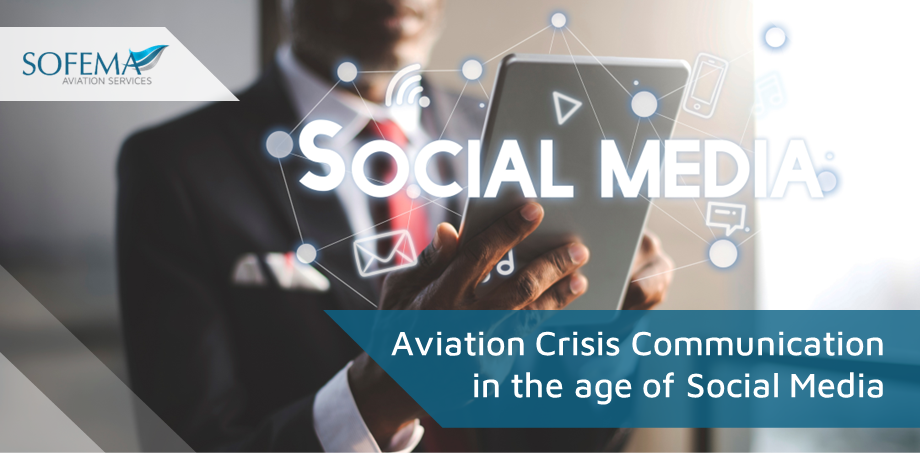Steve Bentley FRAeS CEO of Sofema Aviation Services considers the communication challenges in a “post-enlightened age”.
Introduction – The Good Old Days!
Best Practice in crisis communication used to acknowledge what was referred to as the “Golden Hour” Essentially a period (albeit notional) during which the airline crisis management team would have time to activate, meet, confirm information, determine the initial priorities and issue PR in a controlled and measured way.
Bringing on Change!
Early evidence regarding the power of social media came in December 2008 with the Crash of Continental Airlines runway excursion in Denver. A survivor from a Continental Airlines runway excursion in Denver tweeted a graphic confirmation that his aircraft had just crashed, moments after escaping from the fuselage.
On the evening of December 20, 2008, the flight crashed while taking off from Denver, resulting in two critical injuries, 36 noncritical injuries, and a hull loss of the Boeing 737-524 aircraft.
The Social Media Role
Social media has forced change related to crisis communication, with almost every person having a personal communicator with access to a range of delivery agents including Facebook, LinkedIn, Instagram, What’s App, Viber, Tik Tok, and Twitter (just to mention a small number of the well-known ones.)
Because of the ever presence of social media news and information travel so fast that organisations have little or no time to get ahead of the event.
It is incumbent on organisations to have the capacity to not only follow any issues and potential crises more regularly, but to have the capacity to respond more quickly when something serious does happen.
Tell it as it Is!
If you do the following then you have done all you can to minimize the situation.
- Tell it all,
- Tell it fast and
- Tell the truth
Develop a Preliminary Statement:
- While the development of the full message must await the outbreak of an actual crisis, “Interim statements” can be used to enable a wide variety of scenarios to which the organization is perceived to be vulnerable.
o “We have implemented our crisis response plan, which places the highest priority on the health and safety of our passengers and crew. “
o “Our hearts and minds are with those who are in harm’s way, and we hope that they are well.”
o “We will be supplying additional information when it is available and posting it on our website.”
Dealing with the Media
The challenge of dealing with the media in the middle of a crisis, potentially with the backdrop of a very serious accident outcome and possibly with fatalities.
- Any Spokesperson must have the ability to defend the organization whilst under pressure from reporters who may in some cases (Thanks in part to Social Media) actually have more information than the Spokesperson.
- Persons who are designated as crisis communicators should receive appropriate training to enable them to deal successfully with the challenges of delivering information through a variety of different channels
Next Steps
Follow this link to our Library to find & Download related support documents.
Sofema Aviation Services provides specific support related to ERP Training, Testing & Preparation of Process & Procedures – please visit our website or email team@sassofia.com.
Tags:
Aircraft, aviation, aviation safety, Crisis Management, SAS blogs, Social Media




